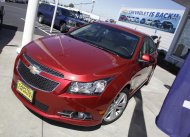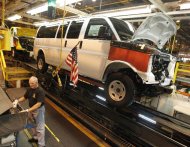 On this past week's DNTO, Guest Host Rosanna Deerchild speaks with several interesting people who offer their own perspectives. One entrepreneur who caught my attention was Howard Mullins, the inventor of a device called The Mosquito. This device takes advantage of a hearing range that kids and teenagers have, but adults don't, and is used by convenience stores to make rowdy teenagers hanging out in front of conveniences leave if they won't behave live civilized people. What I found interesting was a lot of teenagers have downloaded its sound as a ringtone so they know if they have a text in class but so teachers won't realize it since Adults can't hear it. :Shaking My Head:
On this past week's DNTO, Guest Host Rosanna Deerchild speaks with several interesting people who offer their own perspectives. One entrepreneur who caught my attention was Howard Mullins, the inventor of a device called The Mosquito. This device takes advantage of a hearing range that kids and teenagers have, but adults don't, and is used by convenience stores to make rowdy teenagers hanging out in front of conveniences leave if they won't behave live civilized people. What I found interesting was a lot of teenagers have downloaded its sound as a ringtone so they know if they have a text in class but so teachers won't realize it since Adults can't hear it. :Shaking My Head:A Brief History of the Convenience Store (from the NACS website)
Convenience stores evolved from a variety of sources early in the twentieth century. They drew upon characteristics of many types of retail establishments in existence at the time: the "mom-and-pop" neighborhood grocery store, the "ice-house" (from pre-refrigerator days), the dairy store, the supermarket and the delicatessen.In 2008, the convenience store industry’s U.S. sales stood at $624.1 billion – accounting for roughly 4.4 percent of the country’s gross domestic product. The industry also sold an estimated 80 percent of the country’s gasoline purchased. The convenience store industry’s scope was largely a result of its enormous number of locations. By the end of 2008, there were 144,875 convenience stores in the United States – more than the stores from all other competing channels (supermarkets, drug stores, mass merchandisers, dollar stores and wholesale clubs) combined. With the U.S. population now at about 305.5 million, there is one convenience store for every 2,100 people in the country
The Southland Ice Company is credited with the birth of the convenience store in May 1927 on the corner of 12th and Edgefield Streets in the Oak Cliff section of Dallas, Texas. "Uncle Johnny" Jefferson Green, who ran the Southland Ice Dock in Oak Cliff, realized that customers sometimes needed to buy things such as bread, milk and eggs after the local grocery stores were closed. Unlike the local grocery stores, his store was already open 16 hours a day, seven days a week; so, he decided to stock a few of those staple items. The idea turned out to be very convenient for customers.
Joseph C. Thompson, one of the founders and later president and chairman of The Southland Corporation, recognized the potential of Uncle Johnny's idea and began selling the product line at the other ice dock locations of The Southland Company. Further, these stores were open from 7 a.m. to 11 p.m., seven days a week. (Hence the name 7-Eleven)
In addition to convenience store development at The Southland Ice Company, other types of stores were emerging. There were "midget" stores in the 1920s and "motorterias" or mobile convenience stores. "Bantams" and "drive-in" markets were also around in 1929 where motorists never had to get out of their cars. "Delmat" vending machine type of stores were also popular for obtaining milk, eggs, produce and fresh meat. Dairy cooperatives (Such as Lawson's in Ohio,which is now mostly in Asia) often ran "dairy stores" or "jug stores" as outlets for their operations. Sometimes supermarkets had small outlets in rural areas for people who did not travel to the city enough for eggs, milk, etc.
The pattern of the emerging "convenience" types of stores grew modestly until World War II (although they were not yet called "convenience stores"). The big factor in all of these operations was fast service. The stores were most successful in warmer climates where the open front was a big attraction.
The end of the war and the increased ownership of automobiles sparked the rapid growth of the industry in the 1950s. The automobile helped fuel the growth of suburban living--of families wanting the "American Dream." Americans, with bigger cars and better roads, began flocking to the suburbs where they found plenty of space to live and raise children... but too much space between shopping centers.
The industry grew rapidly along with this consumer need for convenient shopping and supplanted the neighborhood grocery stores and became established in new suburbs and areas too small to warrant a supermarket. Once again, convenience store companies were opportunistic and innovative, thriving in market niches too small for others to operate profitably.
Additional forces continued to drive convenience store growth. The growth of the supermarket industry affected convenience stores. As grocery stores became larger and larger, they became less convenient for the customer who was in a hurry. Convenience stores filled in. Suburban families often had two cars and two incomes; both spouses working meant more discretionary income and less time for using a supermarket. Also, the increase in the number of working women reduced the amount of time available for shopping.
Stores were conveniently located. Customers could park in front of stores and could even leave children in the car and keep an eye on them. With the variety of items available, it was virtually one-stop shopping without waiting in line. Stores were easily franchised since it was getting expensive to start up a new store. They entered the northern regions of the country and continued to grow through merger, acquisition and new building.
Convenience stores continued to evolve from characteristics of the competitors: supermarkets, mom-and-pop grocery stores, specialty food shops, drug and variety stores, vending fast food chains, and gasoline service stations.
In the early 1970s, more states began allowing self-service gasoline, so the number of convenience store selling gasoline grew. In 1971, less than 7 percent of all convenience stores sold gasoline. That figure reached 50 percent in 1984, and today stands at around 80 percent.
While gasoline sales make up more than 70 percent of a typical store’s revenues, gasoline is a
very low margin commodity and only accounts for about one-third of a store’s profits. Over the past 15 years, stores have sought to expand their in-store sales by growing their foodservice programs, especially expanding their fresh coffee and sandwich programs. As the economic downturn hit in 2008, many stores found that they were able to maintain – or even grow – their in-store sales, as more customers sought quick take-out meals instead of sit-down meals at restaurants.
Lawson's in Japan
Some other things to think about
In Japan, convenience stores are commonly called “Conbinis” in Japan (sounds like cone-beanie). There are conbinis everywhere in Japan. It’s insane. None sell gasoline like the American version and the staff is very nice (again, unlike the American version). Stores are really clean and they have a ton of items including ready to eat fried chicken and other random fried things that I’ve eaten but can’t tell what they are. They’re often used as landmarks too when you’re trying to navigate through town.
 As a resident of Vancouver, BC two weeks out of the year, I can also say that Canadian convenience stores have been more similar to their Asian counterparts since the late 1980s, but many US conveniences stores (especially those in small towns) have started to catch up as well.
As a resident of Vancouver, BC two weeks out of the year, I can also say that Canadian convenience stores have been more similar to their Asian counterparts since the late 1980s, but many US conveniences stores (especially those in small towns) have started to catch up as well. Some examples I can think of are two convenience stores in Columbus, Texas, on State Highway 71 that are well known Kolache Stops for UT students, as well as for Texans on Road Trips. Plus consider the Bucc-Ee's chain of Convenience Stores and Truck stops, and the institution they are here in Texas.
Questions To Consider:
1. (2302 students) Under what output market structure would convenience stores be considered (think by Corporate Owner, as well as by individual franchisee)?
2. (2301 students) Would you consider their contribution to US GDP to be significant or insignificant? Why or why not?
3. (Any students or readers) What are some possible explanations as to why a bottle of soda pop. a half gallon of milk or a loaf of bread would be sold at a higher price than at a Supermarket or Discount store? Is this higher price justified? What are customers getting from buying at a convenience store instead of buying from a Supermarket or Discount Store? Is it worth the mark-up to the consumer?





